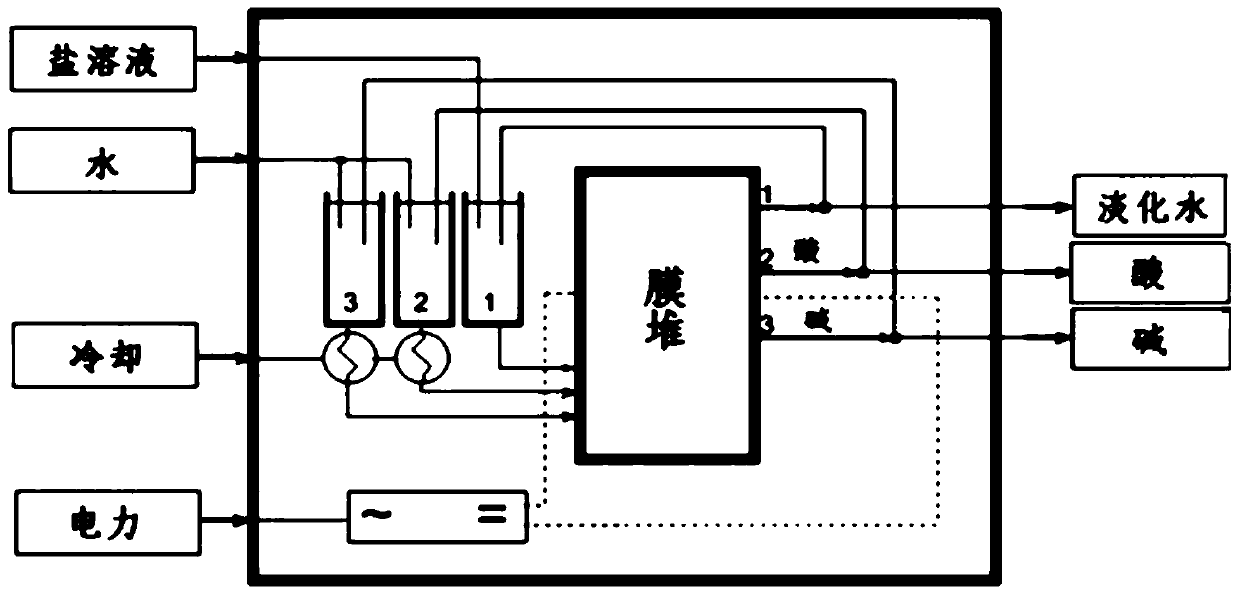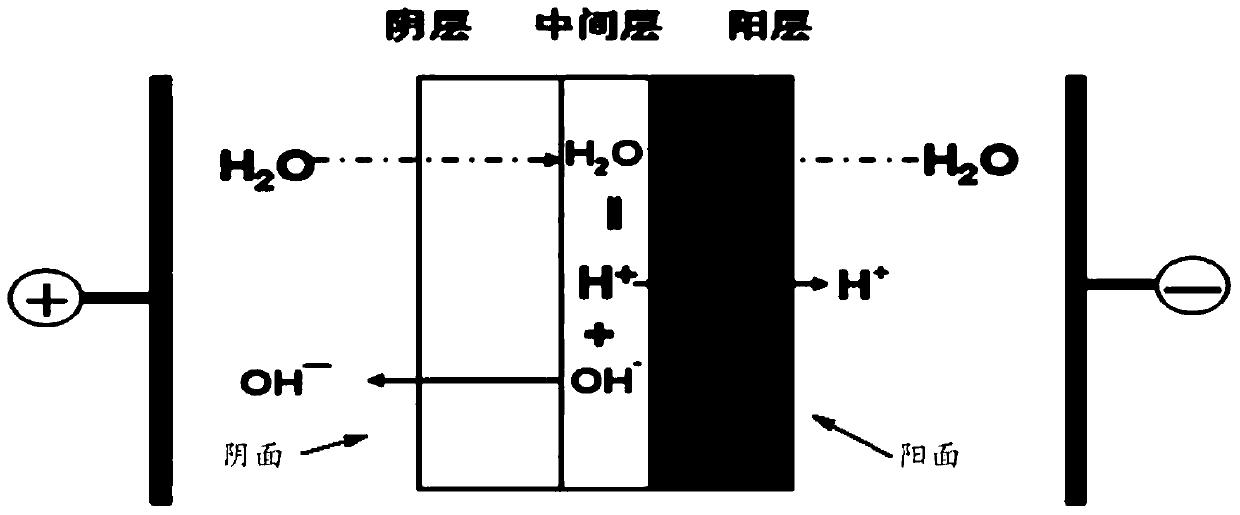A kind of method for preparing halopropanol and propylene oxide
A technology of propylene oxide and halopropanol is applied in the field of preparing propylene oxide, using a new halohydrin method to prepare propylene oxide, and preparing halopropanol, and can solve the problems of serious corrosion, addition side reactions, waste of raw materials and the like, To achieve the effect of reducing biological oxygen content, less steam consumption, and load lightening
- Summary
- Abstract
- Description
- Claims
- Application Information
AI Technical Summary
Problems solved by technology
Method used
Image
Examples
Embodiment 1
[0087] 1) Haloalcoholization: Add 70wt% concentration of hydrogen peroxide H 2 o 2 , HCl solution (hydrochloric acid) and propylene of 35wt% concentration, carry out chlorohydrinization reaction at the temperature of 45 ℃, wherein the hydrogen peroxide H of 70wt% concentration 2 o 2 , 35wt% concentration of HCl solution and propylene three flow should make H 2 o 2 The molar ratio of HCl to propylene is about 1.2:1.2:1. This gives the halohydrin, a mixture of 2-chloropropan-1-ol and 1-chloropropan-2-ol.
Embodiment 2
[0091] 1) Haloalcoholization: add HTS-1 molecular sieve, 35wt% concentration of hydrogen peroxide H in the tower reactor 2 o 2 , HCl solution (hydrochloric acid) and propylene of 20wt% concentration, carry out chlorohydrination reaction at the temperature of 35 ℃, the residence time in tubular reactor is 10 minutes, wherein the mol ratio of HTS-1 molecular sieve and propylene is 0.05: 1, 35wt% concentration of hydrogen peroxide H 2 o 2 , 20wt% concentration of HCl solution and propylene three flow should make H 2 o 2 The molar ratio of HCl to propylene is about 1.5:1.1:1. This gives the halohydrin, a mixture of 2-chloropropan-1-ol and 1-chloropropan-2-ol.
Embodiment 3
[0099] 1) Haloalcoholization: Add 70wt% concentration of hydrogen peroxide H 2 o 2 , HCl solution (hydrochloric acid) and propylene of 35wt% concentration, carry out chlorohydrinization reaction at the temperature of 45 ℃, wherein the hydrogen peroxide H of 70wt% concentration 2 o 2 , 35wt% concentration of HCl solution and propylene three flow should make H 2 o 2 The molar ratio of HCl to propylene is about 1.2:1.2:1. This gives the halohydrin, a mixture of 2-chloropropan-1-ol and 1-chloropropan-2-ol.
[0100] 2) Saponification: performing saponification reaction with the haloalcohol obtained in step 1) and sodium hydroxide, and separating to obtain the propylene oxide organic phase and sodium chloride solution. The saponification reaction is carried out in a steel tower reactor, and the upper part is designed as a sieve tray tower. Steam enters from the bottom of the tower to blow out the crude propylene oxide generated from the top of the tower. The saponification te...
PUM
 Login to View More
Login to View More Abstract
Description
Claims
Application Information
 Login to View More
Login to View More - R&D Engineer
- R&D Manager
- IP Professional
- Industry Leading Data Capabilities
- Powerful AI technology
- Patent DNA Extraction
Browse by: Latest US Patents, China's latest patents, Technical Efficacy Thesaurus, Application Domain, Technology Topic, Popular Technical Reports.
© 2024 PatSnap. All rights reserved.Legal|Privacy policy|Modern Slavery Act Transparency Statement|Sitemap|About US| Contact US: help@patsnap.com










